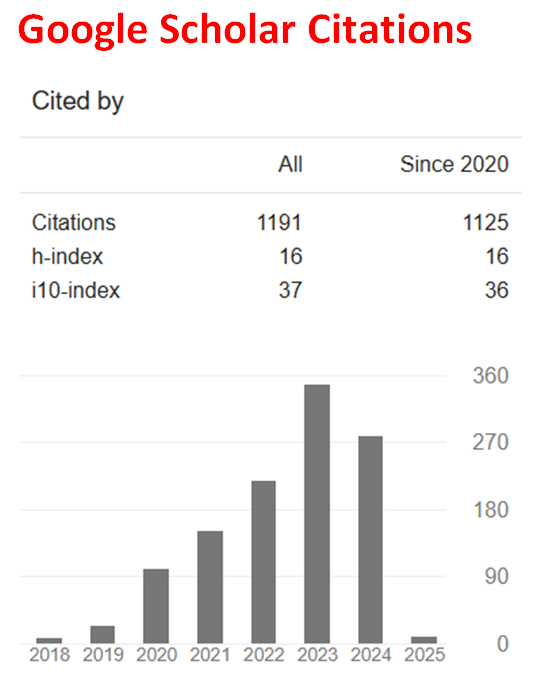The Impact of Industrial Agglomeration on Urban Innovation: An Empirical Analysis in China
Abstract
Based on the theory of industrial agglomeration affecting urban innovation, the panel data of 269 prefecture-level cities and above in China from 2011 to 2017 was used to empirically analyze the internal relationship between industrial agglomeration and urban innovation. The study found that overall industrial agglomeration and tertiary industry agglomeration have a significant promotion effect on urban innovation, while the secondary industry agglomeration does not significantly affect urban innovation; The overall industrial agglomeration and tertiary industrial agglomeration of eastern cities, large and medium-sized cities, and high-tech cities have a significant role in promoting urban innovation, while the promotion effects of mid-western cities, small-scale cities, low-tech, and medium-tech cities are not obvious; The secondary industry agglomeration has no significant impact on the innovation of all regional cities, large-scale cities, and cities with medium and high-tech levels, and the secondary industry agglomeration of low-tech cities also hinders urban innovation. However, with the improvement of the city's technological level, the effect of the concentration of secondary industries on urban innovation has gradually increased; Further analysis found that after using the PSM model to eliminate urban system differences, the basic conclusion that industrial agglomeration affects urban innovation is still valid. The secondary industry agglomeration has a threshold effect on urban innovation, and the effect of the secondary industry agglomeration on urban innovation will gradually increase with the increase of the degree of secondary industry agglomeration. It can be seen that China's high-quality secondary industry agglomeration effect has not yet formed. The above findings provide a theoretical basis for the rational formulation of industrial policies to promote urban innovation.
Downloads
References
R. Andersson, J. M. Quigley and M. Wilhelmsson, Agglomeration and the spatial distribution of creativity, Papers in Regional Science 84(3) (2005), 445-464. https://doi.org/10.1111/j.1435-5957.2005.00049.x
S. Becker and A. Ichino, Estimation of average treatment effects based on propensity scores, The Stata Journal 2(4) (2002), 358-377. https://doi.org/10.1177/1536867X0200200403
W. Chi and X. Qian, The role of education in regional innovation activities: spatial evidence from China, Journal of the Asia Pacific Economy 15(4) (2010), 396-419. https://doi.org/10.1080/13547860.2010.516158
G. Duranton and D. Puga, Micro-foundations of urban agglomeration economies, Handbook of Regional and Urban Economics 4 (2004), 2063-2117. https://doi.org/10.1016/S1574-0080(04)80005-1
B. E. Hansen, Threshold effects in non-dynamic panels: estimation, testing, and inference, Journal of Econometrics 93(2) (1999), 345-368. https://doi.org/10.1016/S0304-4076(99)00025-1
Z. Griliches, Patent statistics as economic indicators: a survey, Journal of Economic Literature 28(4) (1990), 287-343. https://doi.org/10.3386/w3301
Z. Kou and X. Liu, FIND Report on City and Industrial Innovation in China (2017), Fudan Institute of Industrial Development, School of Economics, Fudan University, Shanghai, China, 2017.
B. Lin and K. Du, Energy and CO2 emissions performance in China’s regional economies: Do market-oriented reforms matter?, Energy Policy 78 (2015), 113-124. https://doi.org/10.1016/j.enpol.2014.12.025
J. Liu, Z. Cheng and H. Zhang, Does industrial agglomeration promote the increase of energy efficiency in China?, Journal of Cleaner Production 164 (2017), 30-37. https://doi.org/10.1016/j.jclepro.2017.06.179
J. Marceau, Introduction: Innovation in the city and innovative cities, Innovation - The European Journal of Social Science Research 10 (2008), 136-145. https://doi.org/10.5172/impp.453.10.2-3.136
X. Peng and C. Jiang, Industrial agglomeration, technological spillovers and regional innovation: evidences from china, China Economic Quarterly 10(03) (2011), 913-934.
F. Sheng, The spatial agglomeration of producer service industry and the upgrading of manufacturing industry: mechanism and experience —— a spatial econometric analysis based on the data from 230 cities, Industrial Economics Research 2 (2014), 32-39+110 (in Chinese).
L. Xie, Do industrial agglomeration and innovation incentives improve regional innovation efficiency? —— An empirical study of urban agglomerations in the Yangtze River Delta, China Economic Quarterly 8 (2019), 102-112 (in Chinese).
Y. Yu, D. Liu and Y. Xuan, The spatial spillover effect and regional damping boundary of productive services agglomeration on manufacturing productivity: empirical research based on spatial econometric model, Journal of Financial Research 2 (2016), 23-36 (in Chinese).
N. Zhang, F. Kong, Y. Choi, et al., The effect of size-control policy on unified energy and carbon efficiency for Chinese fossil fuel power plants, Energy Policy 70 (2014), 193-200. https://doi.org/10.1016/j.enpol.2014.03.031
H. Zhang, How does agglomeration promote the product innovation of Chinese firms?, China Economic Review 35 (2015), 105-120. https://doi.org/10.1016/j.chieco.2015.06.003

This work is licensed under a Creative Commons Attribution 4.0 International License.
.jpg)

